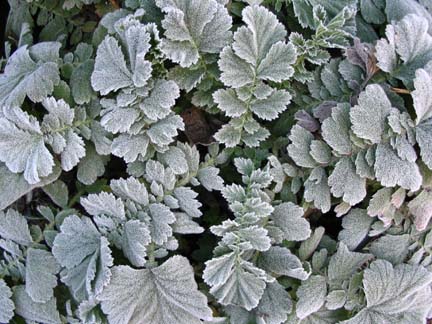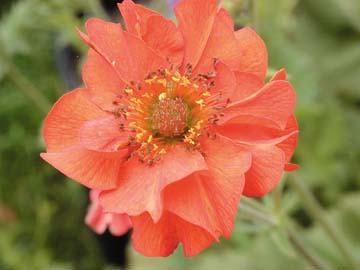|
Jan. 27, 2005
Sticking to what worksby AMY STEWART I'M ALWAYS SURPRISED AT WHAT FLOWERS WON'T GROW IN MY garden. I have a great deal of trouble getting annual sunflowers to stick around, for instance. Either the snails mow them down or they just don't get quite enough heat and sunlight to push them along. I say this with full knowledge that a neighbor just two blocks away has gorgeous sunflowers all summer. Maybe she has better soil, better protection from the wind or better luck. I can't explain it. Any number of easy-to-grow plants
fall into this category, and sometimes the list changes from
year to year. Last year I couldn't get cosmos to take off. I've
had trouble with poppies. I'm embarrassed to tell you how much
I've spent on bareroot clematis, only to have them wither away
to nothing and disappear. These mysterious failures have taught me one valuable lesson: When you find something that works, stick with it. Plant lots of it. Turn it into your signature look. I've done this with maximilian sunflower (Helianthus maximilianii), for instance. It's a perennial cousin to the annual sunflower and it grows like a weed once established, blooming reliably every fall with bright yellow flowers that are smaller than most sunflowers but just as cheerful. This year, I've decided to promote geum to more of a starring role. It's proven itself to be loyal, hard working and reliable, so much so that I've been snapping it up every time I see it at the nursery and planting one in any empty space I have available. I didn't love it at first, but once I realized that it was prepared to stand by me no matter what, I started to see the possibilities.
Geum is a perennial with low-growing foliage, which means that it will stay well-hidden when it's not in bloom. It tolerates a little shade, but it likes the sun. It blooms in yellow, orange (including a tangerine/salmon orange) and red, so you can work it into almost any color scheme. The flowers, which are only a little under 2 inches across, rise on slender 1- to 2-foot stems and generally take the shape of a camellia or a wild rose in full bloom. There are single and double forms -- the doubles tend to be more rose-like. Most of the geums you'll see in the nurseries around town are G. chiloense, a species native to Chile, but there are also varieties that come from Asia and Europe. There's even a species called prairie smoke (named for its feathery seed pods) that is native to the Midwest. The flowers are a bit too small to make much of a statement massed together. This is an informal flower that works best when it's just stuck in among something else. Because the stems are so slender, the flowers always look like they're bobbing and swaying. Geum is never going to stand up straight or march in a line, but it will weave in among whatever's planted next to it and fill in little gaps in the border. I planted a couple underneath a blue salvia last summer and the brilliant orange-red flowers popped up among the stiff blue spires of salvia and looked spectacular. The yellow `Lady Stratheden' works well among a bunch of Shasta daisies, and the tangerine version pairs with creamy yellow roses and just about any pastel color. They make good cut flowers, and whether you want them in a vase or not, you should keep cutting them anyway to get more blooms into the fall. The foliage can get a little scraggly and has a tendency to form a mound, but I just rake the dead stuff out and divide them in the fall when they get too bulky. I see geum in nurseries around town throughout the year, but they're not the sort of flower to burst into bloom and look gorgeous in the pot, so they tend to get overlooked. Keep an eye out for them in affordable six-packs and 4-inch pots -- even smaller, younger plants will probably bloom the first year, so there's not much point in spending extra money for the one-gallon size. Besides, once you have them, you'll be able to divide them and move them around every fall. And unlike certain other plants I could mention, they will never, ever let you down. garden-related announcements and news to Amy Stewart. IN THE NEWS | COVER STORY | STAGE DOOR | THE HUM | PREVIEW | CALENDAR © Copyright 2004, North Coast Journal, Inc. |



 [ABOVE LEFT: GEUM CHILOENSE ON A FROSTY
MORNING.
[ABOVE LEFT: GEUM CHILOENSE ON A FROSTY
MORNING.